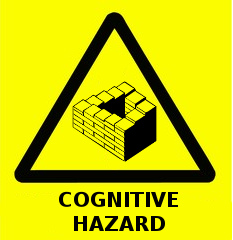 A cognitive bias is a genuine deficiency or limitation in our thinking — a flaw in judgment that arises from errors of memory, social attribution, and miscalculations (such as statistical errors or a false sense of probability).
A cognitive bias is a genuine deficiency or limitation in our thinking — a flaw in judgment that arises from errors of memory, social attribution, and miscalculations (such as statistical errors or a false sense of probability).
Some social psychologists believe our cognitive biases help us process information more efficiently, especially in dangerous situations. Still, they lead us to make grave mistakes. We may be prone to such errors in judgment, but at least we can be aware of them. Here are some important ones to keep in mind.
Confirmation Bias
We love to agree with people who agree with us. It’s why we only visit websites that express our political opinions, and why we mostly hang around people who hold similar views and tastes. We tend to be put off by individuals, groups, and news sources that make us feel uncomfortable or insecure about our views — what the behavioral psychologist B. F. Skinner called cognitive dissonance. It’s this preferential mode of behavior that leads to the confirmation bias — the often unconscious act of referencing only those perspectives that fuel our pre-existing views, while at the same time ignoring or dismissing opinions — no matter how valid — that threaten our world view. And paradoxically, the internet has only made this tendency even worse.
Ingroup Bias
The ingroup bias is a manifestation of our innate tribalistic tendencies. And strangely, much of this effect may have to do with oxytocin — the so-called “love molecule.” This neurotransmitter, while helping us to forge tighter bonds with people in our ingroup, performs the exact opposite function for those on the outside — it makes us suspicious, fearful, and even disdainful of others. Ultimately, the ingroup bias causes us to overestimate the abilities and value of our immediate group at the expense of people we don’t really know.
Gambler’s Fallacy
It’s called a fallacy, but it’s more a glitch in our thinking. We tend to put a tremendous amount of weight on previous events, believing that they’ll somehow influence future outcomes. The classic example is coin-tossing. After flipping heads, say, five consecutive times, our inclination is to predict an increase in likelihood that the next coin toss will be tails — that the odds must certainly be in the favor of heads. But in reality, the odds are still 50/50. As statisticians say, the outcomes in different tosses are statistically independent and the probability of any outcome is still 50%.
Relatedly, there’s also the positive expectation bias — which often fuels gambling addictions. It’s the sense that our luck has to eventually change and that good fortune is on the way. It also contribues to the “hot hand” misconception. Similarly, it’s the same feeling we get when we start a new relationship that leads us to believe it will be better than the last one.
Post-Purchase Rationalization
Remember that time you bought something totally unnecessary, faulty, or overly expense, and then you rationalized the purchase to such an extent that you convinced yourself it was a great idea all along? Yeah, that’s post-purchase rationalization in action — a kind of built-in mechanism that makes us feel better after we make crappy decisions, especially at the cash register. Also known as Buyer’s Stockholm Syndrome, it’s a way of subconsciously justifying our purchases — especially expensive ones. Social psychologists say it stems from the principle of commitment, our psychological desire to stay consistent and avoid a state of cognitive dissonance.
Neglecting Probability
Very few of us have a problem getting into a car and going for a drive, but many of us experience great trepidation about stepping inside an airplane and flying at 35,000 feet. Flying, quite obviously, is a wholly unnatural and seemingly hazardous activity. Yet virtually all of us know and acknowledge the fact that the probability of dying in an auto accident is significantly greater than getting killed in a plane crash — but our brains won’t release us from this crystal clear logic (statistically, we have a 1 in 84 chance of dying in a vehicular accident, as compared to a 1 in 5,000 chance of dying in an plane crash [other sources indicate odds as high as 1 in 20,000]). It’s the same phenomenon that makes us worry about getting killed in an act of terrorism as opposed to something far more probable, like falling down the stairs or accidental poisoning.
This is what the social psychologist Cass Sunstein calls probability neglect — our inability to properly grasp a proper sense of peril and risk — which often leads us to overstate the risks of relatively harmless activities, while forcing us to overrate more dangerous ones.
Observational Selection Bias
This is that effect of suddenly noticing things we didn’t notice that much before — but we wrongly assume that the frequency has increased. A perfect example is what happens after we buy a new car and we inexplicably start to see the same car virtually everywhere. A similar effect happens to pregnant women who suddenly notice a lot of other pregnant women around them. Or it could be a unique number or song. It’s not that these things are appearing more frequently, it’s that we’ve (for whatever reason) selected the item in our mind, and in turn, are noticing it more often. Trouble is, most people don’t recognize this as a selectional bias, and actually believe these items or events are happening with increased frequency — which can be a very disconcerting feeling. It’s also a cognitive bias that contributes to the feeling that the appearance of certain things or events couldn’t possibly be a coincidence (even though it is).
Source:
http://io9.com/5974468/the-most-common-cognitive-biases-that-prevent-you-from-being-rational
